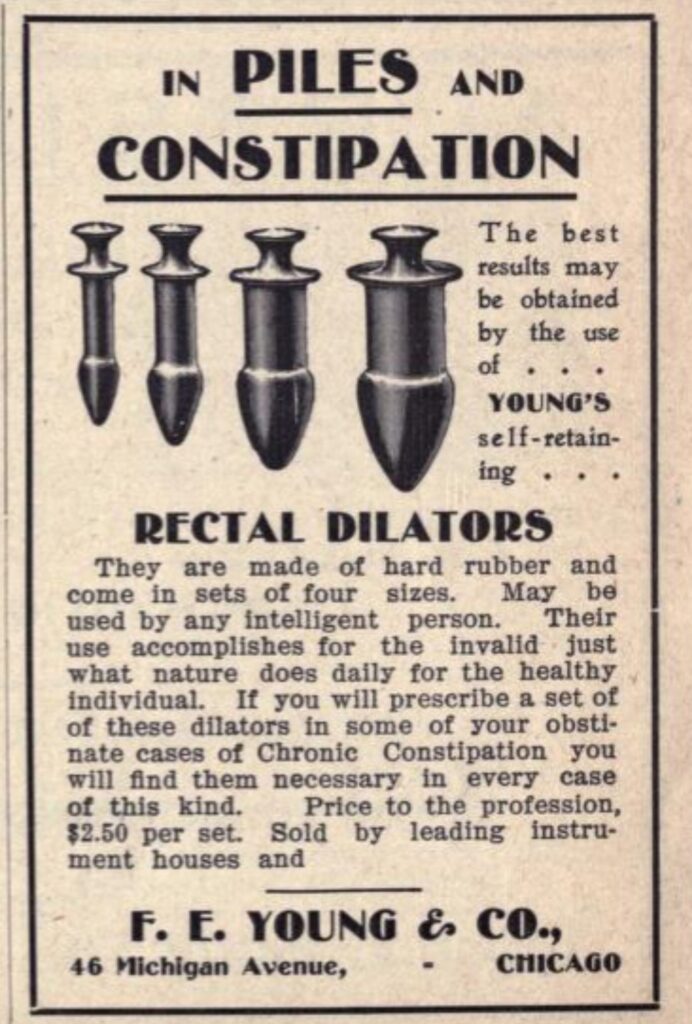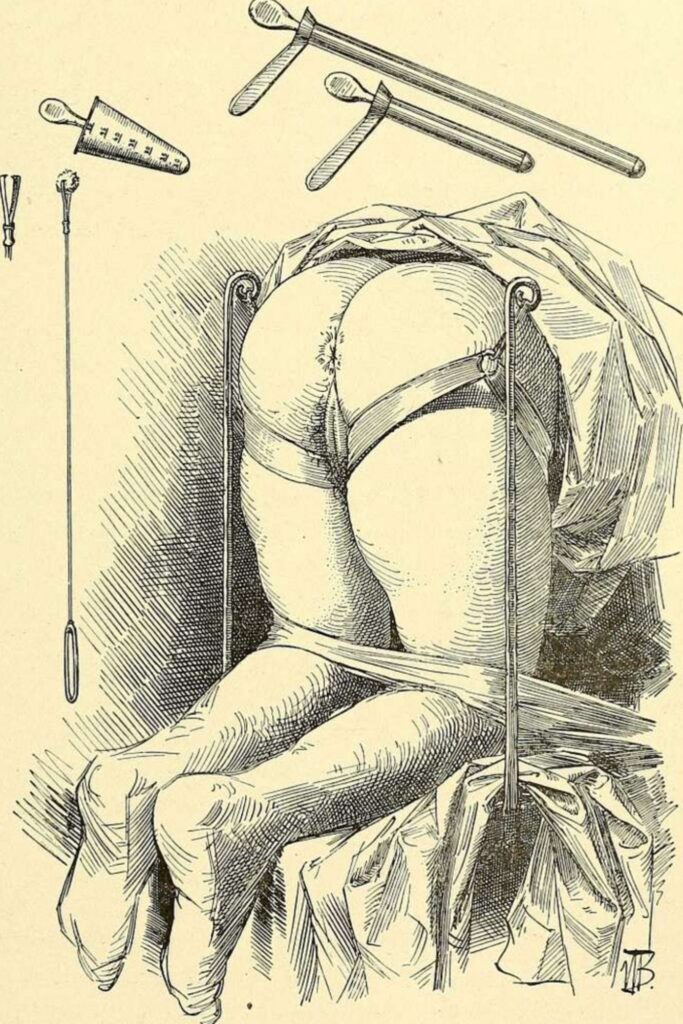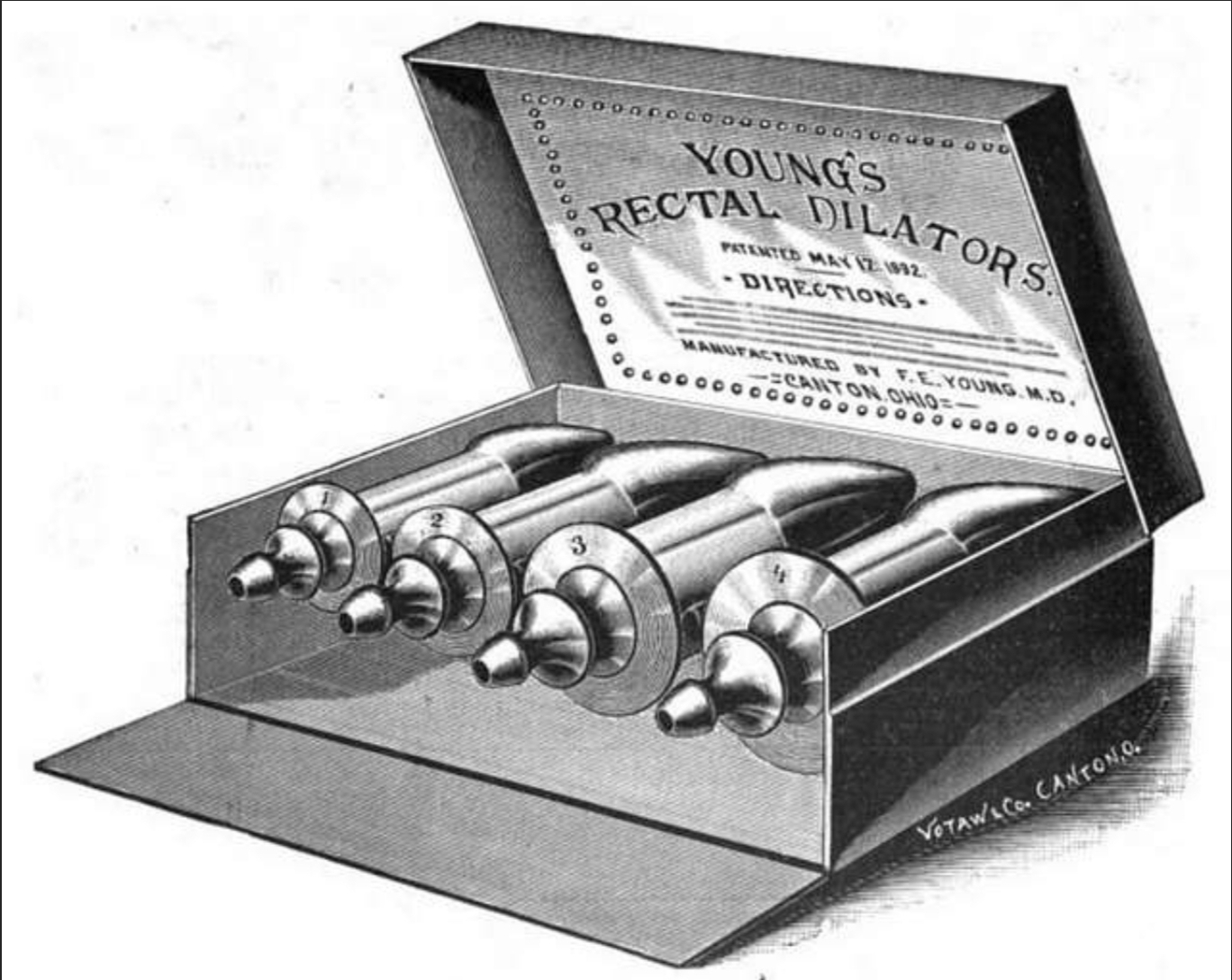Rectal Dilators & The Fun They Brought In The Late 1800s

Young’s Self-Retaining Rectal Dilators were a medical device marketed in the late 19th and early 20th centuries as a treatment for various rectal and pelvic disorders, including hemorrhoids (piles) and constipation. These dilators were designed to be inserted into the rectum and left in place for a period of time to stretch and widen the anal canal and rectum.
Historical Context
In the late 1800s and early 1900s, there was a growing interest in the medical community in treating rectal and pelvic disorders using mechanical devices. This era saw the development and marketing of various rectal dilators, including Young’s Self-Retaining Rectal Dilators, which claimed to alleviate symptoms associated with hemorrhoids and constipation.
Advertisement Description
The advertisements for Young’s Self-Retaining Rectal Dilators typically appeared in medical journals, newspapers, and magazines of the time. They often featured detailed illustrations and descriptions highlighting the benefits of the product.

Illustrations: Advertisements would often include anatomical drawings demonstrating the use of the dilators and their purported effects on the rectum and anal canal. These illustrations were intended to convey a sense of medical legitimacy and effectiveness.
Claims and Benefits: The advertisements touted the dilators as a non-invasive and effective treatment for hemorrhoids and constipation. They claimed that regular use of the dilators could stretch and strengthen the rectal muscles, promote healthy blood circulation, and alleviate discomfort associated with these conditions.
Testimonials: Some advertisements included testimonials from purported users or medical professionals endorsing the product’s efficacy. These testimonials aimed to instill confidence in potential buyers regarding the safety and effectiveness of Young’s Rectal Dilators.
Instructions for Use: Advertisements typically provided instructions on how to use the dilators, emphasizing the importance of proper insertion and duration of use for optimal results. They may have also highlighted the convenience and ease of incorporating the dilators into a daily health regimen.
Medical Reception and Evolution
While rectal dilators like Young’s were marketed as innovative medical devices, their effectiveness and safety were subject to debate within the medical community. Some physicians endorsed their use for certain conditions, while others questioned their efficacy and potential risks.
Over time, advancements in medical understanding and the development of more evidence-based treatments led to a decline in the popularity of rectal dilators for conditions like hemorrhoids and constipation. Today, these devices are viewed as historical artifacts reflecting the evolving practices and beliefs in the field of medicine.
Conclusion
Young’s Self-Retaining Rectal Dilators represent a fascinating chapter in the history of medical devices and the treatment of rectal and pelvic disorders. Their advertisements offer insights into the medical practices and beliefs of the late 19th and early 20th centuries, highlighting both the innovative approaches and limitations of medical interventions during that era.







